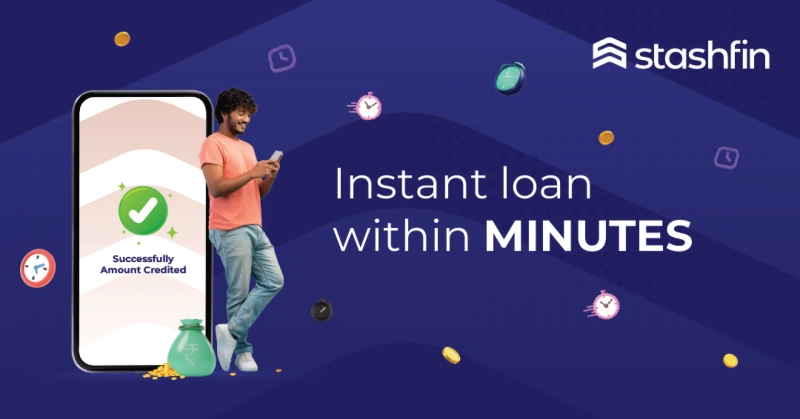In India’s rapidly evolving financial ecosystem, the choice between digital loans and traditional loans is no longer just a matter of preference; it’s a question of speed, access, and convenience. Whether you are a salaried professional seeking a personal loan for an urgent expense or a student looking for a quick credit line, online loan apps are fast becoming the go-to solution. With mobile-first platforms like Stashfin leading the fintech revolution, the appeal of digital lending over brick-and-mortar banking has never been stronger.
As smartphones become ubiquitous and India’s digital infrastructure strengthens, millions of Indians are now shifting away from conventional banking procedures to embrace the seamless experience of online loan app. In this article, we will explore why digital loans are becoming increasingly preferred over traditional options and what makes them the smarter choice in 2025.
What Are Digital Loans and How Do They Work?
Digital loans are financial products offered through online loan apps or fintech platforms. These loans can be applied for, approved, and disbursed without needing to visit a bank branch. Platforms like Stashfin use data-driven algorithms and digital documentation to assess creditworthiness and provide instant approval for personal loans. Loan amounts, interest rates, and repayment terms are tailored based on individual profiles, often without human intervention.
Types of Loans Offered Digitally
- Personal Loans: One of the most common digital lending products.
- Credit Lines: Revolving credit with flexible repayments.
- Buy Now, Pay Later (BNPL): Short-term, interest-free loans at checkout.
- Salary Advance Loans: Short-term loans for salaried professionals.
- Student Loans: Small-ticket loans tailored for educational expenses.
Accessibility for Diverse Borrowers
A key benefit of digital loans is their accessibility. Borrowers with thin credit files or from underserved regions can gain access to funds, thanks to alternate data points like utility bill payments or social media behaviour, which platforms like Stashfin utilise.
Traditional Loans: Why the Old Model Falls Short
1. Lengthy Approval Processes
Traditional bank loans often require face-to-face meetings, paper-heavy processes, and multiple verification stages. Even for a basic personal loan, approvals can take several days or weeks, making them less ideal for urgent requirements.
2. Rigid Eligibility Criteria
Banks typically adhere to stricter underwriting standards. A low credit score, absence of collateral, or irregular income can significantly reduce your chances of securing a traditional loan.
3. Inconvenient Application and Documentation
Traditional loans involve in-person document submission and multiple visits to the branch. This poses a challenge to borrowers in remote areas or those with time constraints.
4. Limited Availability Outside Working Hours
Traditional banks operate within fixed business hours, which can be inconvenient for people with full-time jobs or unconventional schedules. Digital platforms are 24/7, providing financial access at any time.
Why Digital Loans Are a Better Option in 2025
1. Faster Approval and Disbursement
Time is money, especially during emergencies. Online personal loan app offer approval in minutes and disburse funds within hours, a feature that’s particularly useful for medical bills, travel emergencies, or overdue payments.
2. Minimal Documentation
Gone are the days of submitting reams of paperwork. With digital KYC and document upload features, loan apps drastically reduce processing time and human error. You can upload your Aadhaar, PAN, salary slips, and bank statements directly through the app.
3. User-Friendly Interface
The best loan apps in India, such as Stashfin, come with intuitive UI/UX designs that simplify the borrowing experience. From eligibility checks to EMI calculations, everything is available at your fingertips.
4. Customised Loan Offers
Digital lenders can tailor personal loan offers based on AI-based risk assessment. Unlike traditional banks that offer flat-rate loans, fintech platforms use dynamic data to propose personalised loan structures with flexible EMIs and tenures.
5. Enhanced Transparency and Tracking
With digital loans, every transaction is logged and accessible via a mobile device. You can track your loan application status, upcoming EMIs, outstanding balance, and interest charges through the app, ensuring complete financial control.
6. Better for Low or Moderate Credit Scores
Platforms like Stashfin are more inclusive and may offer loans to individuals with low or limited credit history, provided they meet other eligibility criteria, such as a steady income or consistent digital financial behaviour.
Safety, Regulation, and User Trust
1. BI Guidelines and Digital Lenders
Digital lending platforms now operate under the purview of the Reserve Bank of India (RBI), ensuring borrower rights, data privacy, and ethical collection practices are maintained. This regulatory backing has helped increase trust in online loan apps.
2. Cybersecurity Measures
Modern loan apps use encryption, two-factor authentication, and secure APIs to safeguard user data. Stashfin, for instance, maintains high compliance standards and invests in robust cybersecurity infrastructure.
3. Transparency in Charges
Hidden charges and complex fee structures have often plagued traditional lending. In contrast, digital lenders display processing fees, interest rates, and penalties upfront, ensuring transparency.
Conclusion
The shift from traditional to digital lending is not merely a trend; it represents a significant transformation in how financial services are accessed in India. Online personal loan apps are democratising credit by offering faster, fairer, and more flexible financial solutions to a broader segment of society. For borrowers in need of urgent funds or those seeking a seamless, secure, and efficient lending experience, digital loans emerge as the superior choice.
Platforms like Stashfin are at the forefront of this transformation, redefining how credit is delivered with a customer-first approach. From real-time loan approvals and tailored offers to financial literacy tools and income protection solutions, such apps are not just bridging the credit gap; they’re creating a new benchmark for responsible, accessible lending.
As we move into a more digital and connected future, selecting the right loan app can be crucial to achieving better financial health and independence. Whether you're dealing with an emergency or planning a major purchase, ensure your loan provider is not just a lender, but a partner in your financial journey.



